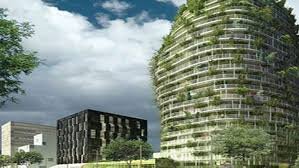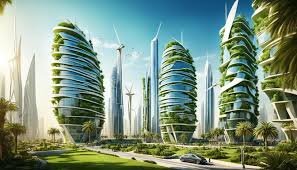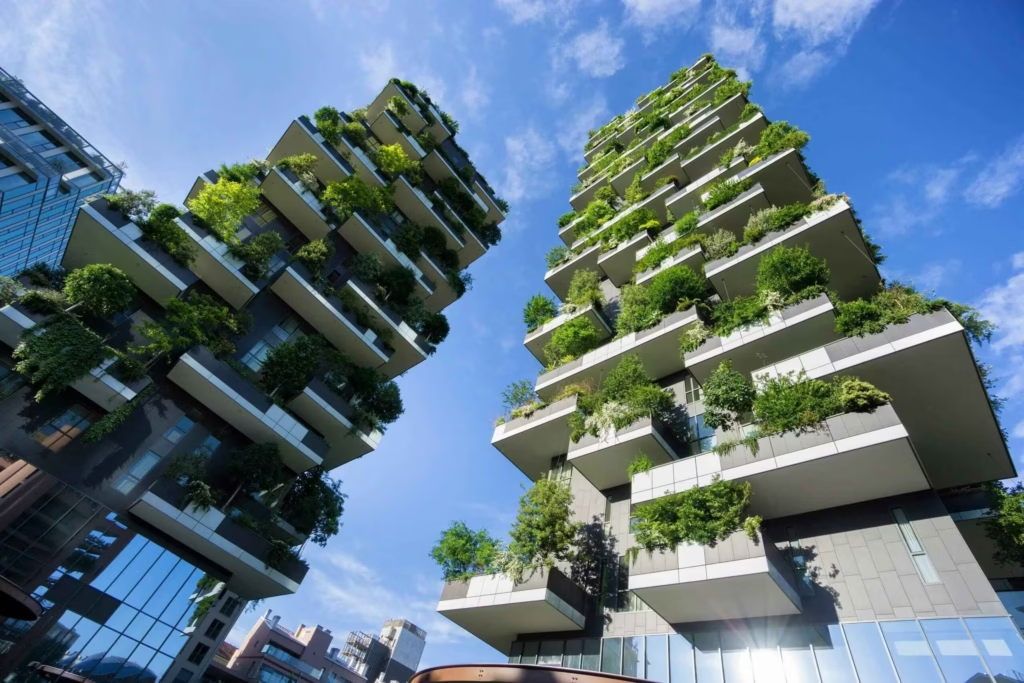The United Arab Emirates, long known for its towering skyscrapers and architectural marvels, is undergoing a silent yet powerful transformation — a shift toward sustainability through the development of green buildings. As environmental concerns take center stage worldwide, the UAE is embracing eco-friendly construction in a bid to reduce its carbon footprint, preserve resources, and shape a greener future.
In this article, we dive deep into the factors driving the green building movement in the UAE, the technologies powering it, and how this change is impacting everything from urban design to business practices.
What Are Green Buildings?

Green buildings are structures that are environmentally responsible and resource-efficient throughout their lifecycle. From design and construction to operation and maintenance, these buildings aim to reduce environmental impact and promote healthier living conditions.
They typically include:

- Energy-efficient systems
- Sustainable materials
- Water conservation features
- Waste reduction mechanisms
- Improved indoor air quality
- Smart automation technologies
In the UAE, the definition also includes compliance with local green standards, such as Estidama in Abu Dhabi or the Dubai Green Building Regulations.
Why the Shift Toward Green Buildings?
There are several compelling reasons why the UAE is seeing a boom in sustainable construction:
1. Government Regulations and Vision
The UAE’s leadership is committed to building a sustainable nation. Initiatives like UAE Vision 2030 and the UAE Green Agenda 2030 have clear environmental goals, pushing both public and private sectors to adopt greener practices.
Abu Dhabi’s Estidama Pearl Rating System and Dubai Municipality’s green building mandates are just two examples of how the government is steering construction toward sustainability.
2. Environmental Necessity
The UAE faces extreme temperatures, limited water resources, and high energy consumption. Green buildings help combat these challenges by reducing energy and water usage, lowering carbon emissions, and minimizing the environmental toll of urbanization.

3. Economic Benefits
While green buildings may have higher initial construction costs, they offer long-term cost savings through lower utility bills, maintenance costs, and increased property value. For developers and investors, it’s a smart economic move.
4. Global Recognition and Investor Demand
International companies and investors now prefer green-certified buildings, both for office space and hospitality. Having a LEED-certified or Estidama-rated building enhances a company’s reputation and attracts eco-conscious tenants and stakeholders.
Technologies Powering Green Buildings in the UAE
The rapid rise of sustainable architecture in the UAE is made possible by the integration of advanced technologies:
- Smart Lighting and HVAC Systems: Automated systems that adapt to occupancy and external conditions to reduce energy use.
- Solar Panels: Rooftop and façade solar panels are increasingly common in buildings across Dubai and Sharjah.
- Water Recycling Systems: Greywater recycling and low-flow fixtures significantly reduce water waste.
- Green Roofs and Vertical Gardens: These not only insulate buildings but also reduce the heat island effect in dense urban areas.
- Eco-Friendly Materials: The use of recycled concrete, bamboo, and locally sourced materials reduces carbon impact.
Many of these technologies are now standard in new commercial and residential developments in cities like Dubai, Abu Dhabi, and Sharjah.
Iconic Green Buildings in the UAE
Some of the most iconic sustainable buildings are located right here in the UAE:
- The Sustainable City (Dubai): A fully integrated, net-zero energy development with car-free zones, solar-powered homes, and recycled water irrigation.
- Masdar City (Abu Dhabi): A model for future urban living, Masdar City is designed to be one of the most sustainable cities in the world, powered by renewable energy and built with smart planning.
- Bee’ah Headquarters (Sharjah): Designed by Zaha Hadid Architects, this futuristic building is powered entirely by renewable energy and built from sustainable materials.
These projects are more than just structures — they’re living examples of what’s possible when innovation meets environmental commitment.
Green Certifications in the UAE
The UAE encourages green development through multiple certification programs:
- LEED (Leadership in Energy and Environmental Design): A globally recognized certification used for many commercial buildings in the UAE.
- Estidama: A local initiative from the Abu Dhabi Urban Planning Council, with a Pearl Rating System assessing sustainability performance.
- Dubai Green Building Regulations and Specifications: Mandatory for all new buildings in the emirate.
These certifications ensure projects meet strict energy, water, and waste management criteria, creating a measurable path toward environmental excellence.

Challenges to Green Building Adoption
Despite its growth, green building adoption in the UAE is not without challenges:
- Higher Upfront Costs: Sustainable materials and technologies often come with higher initial investments.
- Limited Awareness: Some developers and homeowners are still unfamiliar with long-term benefits.
- Skill Gaps: There’s a shortage of professionals trained in sustainable architecture and engineering.
- Maintenance Issues: Green technologies require regular upkeep, and improper maintenance can reduce effectiveness.
However, these challenges are being gradually overcome through policy changes, subsidies, education, and industry collaboration.
The Future of Sustainable Architecture in the UAE
The green building movement in the UAE is not a passing trend — it’s the foundation of future urban planning. With climate change becoming an increasingly urgent concern, the UAE is taking bold steps to ensure that its rapid development is matched by environmental responsibility.
We can expect to see:
- Retrofitting of existing buildings to meet green standards
- More public-private partnerships for sustainable development
- Greater integration of AI and IoT in building systems
- Education and training for green building professionals
- Massive sustainable developments in all seven emirates
Conclusion
Green buildings are redefining the architectural landscape of the UAE. Driven by necessity, ambition, and innovation, the country is showing the world that luxury and sustainability can go hand in hand. For real estate developers, investors, architects, and citizens, the green building revolution offers not just economic benefits — but a more livable, sustainable future.
As the UAE continues to lead the Middle East in environmental progress, green buildings will remain at the heart of its growth story.
Do follow UAE Stories on Instagram
Freelance Visa in UAE: Discover the Ultimate Application Process















